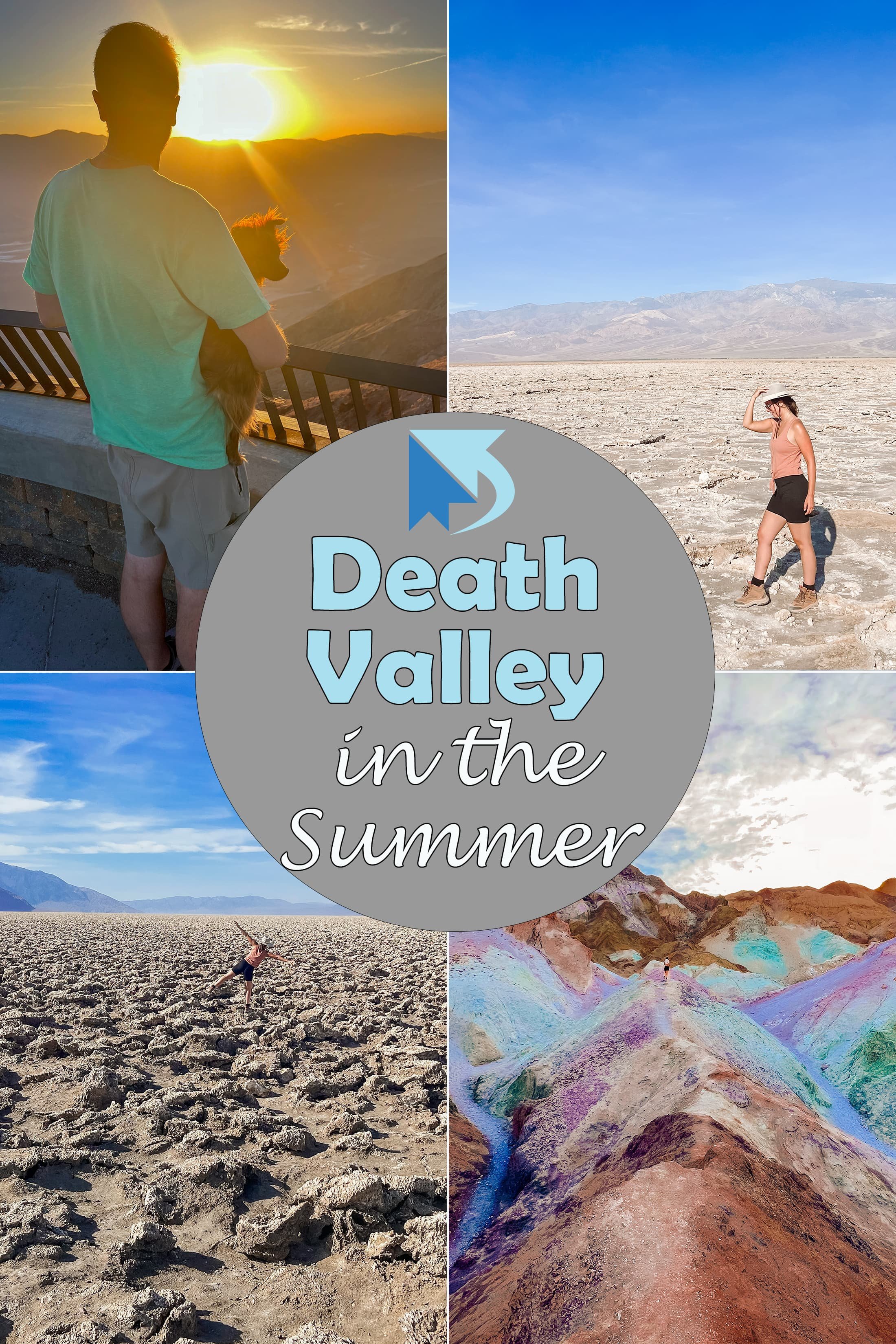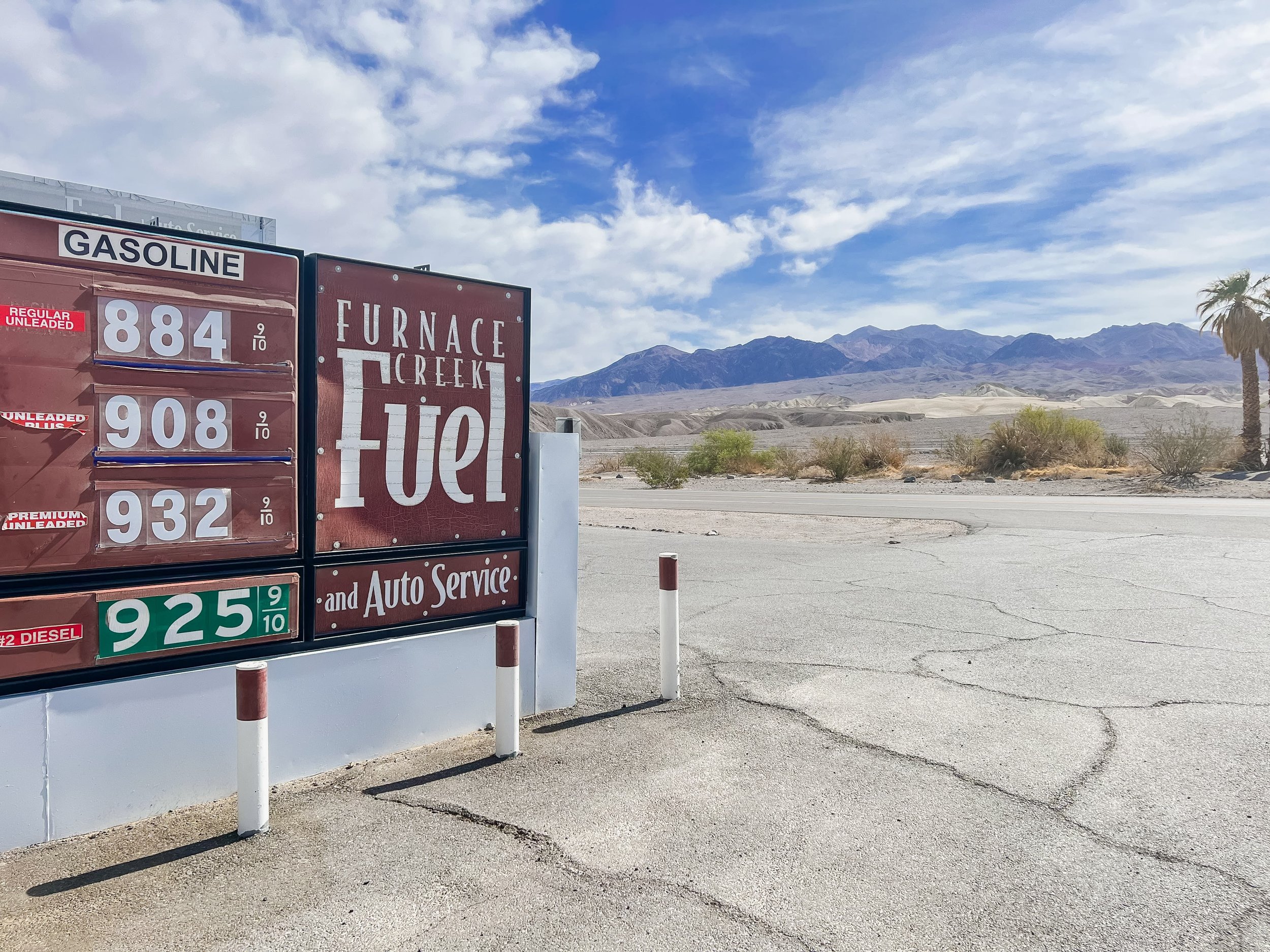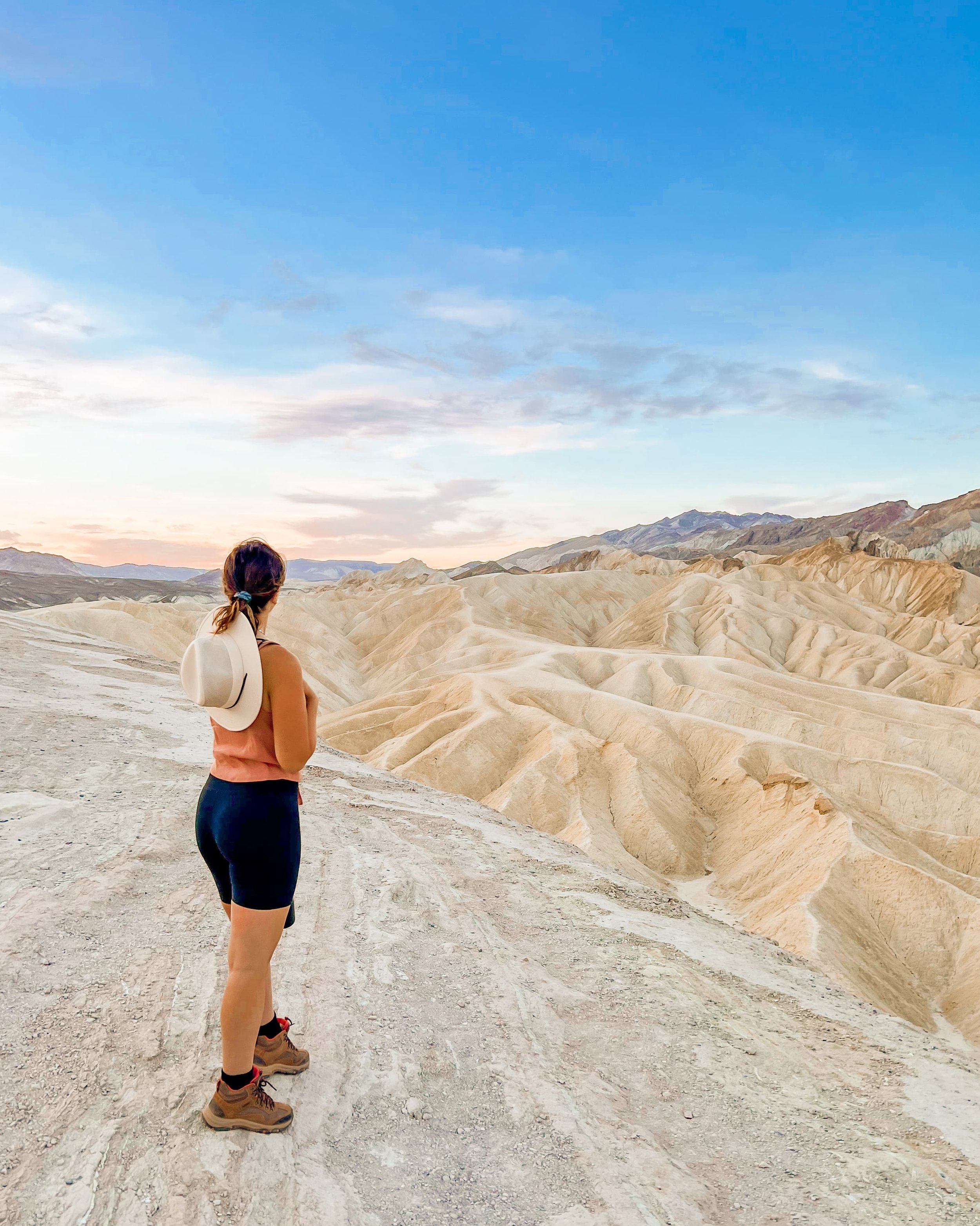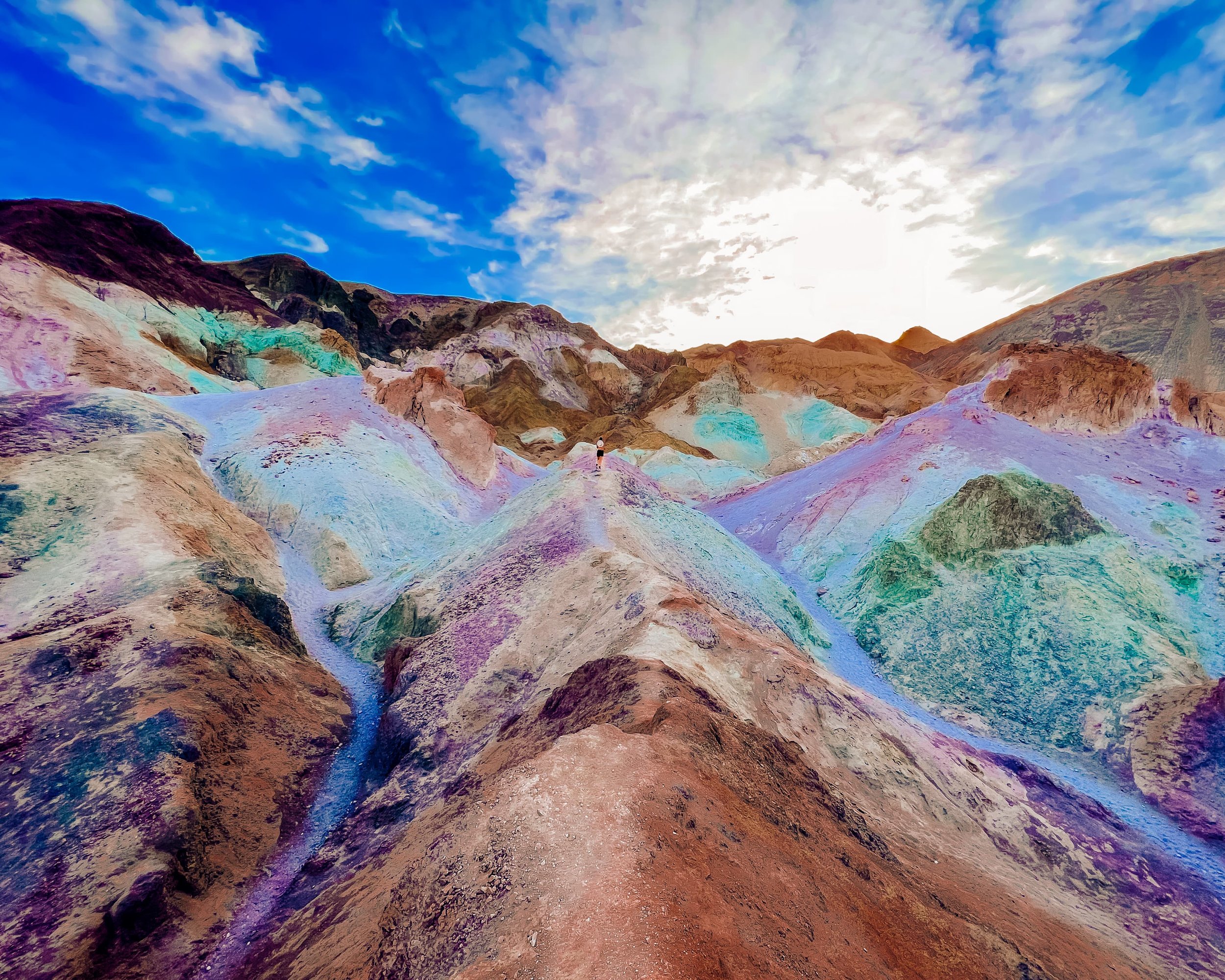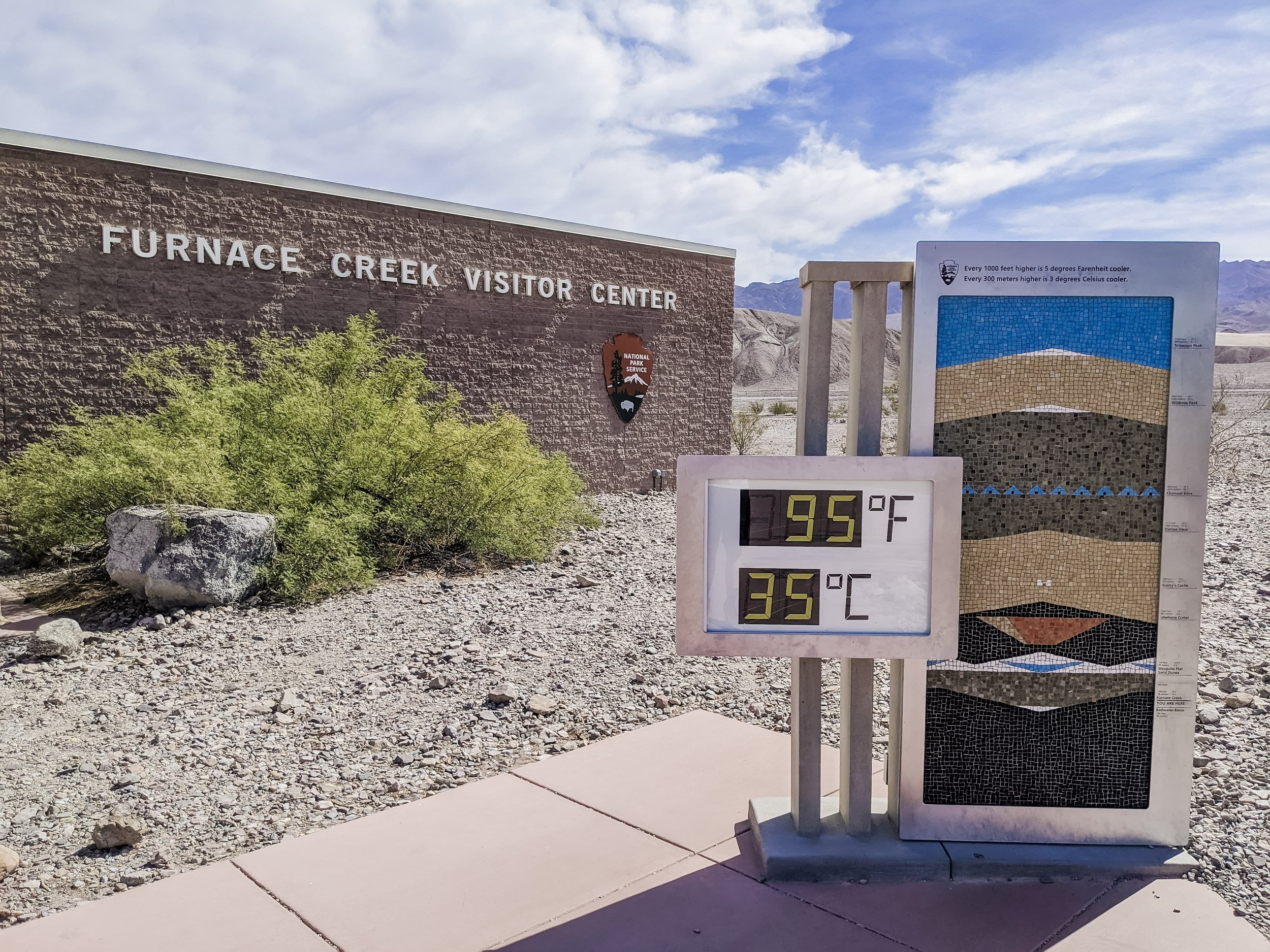Discover How to Explore Death Valley in the Summer - A One Day Itinerary
Death Valley National Park is one of the hottest places in the world. Learn how to safely explore it if you visit during the summer.
This post may contain affiliate links where I earn a small commission when you make a purchase using the links at no additional cost to you.
📍- Death Valley National Park, California
Shadowed by the towering Panamint Mountain Range, Death Valley is a wondrous land of polar extremes. This National Park, which stands as the largest national park in the lower 48 states, contains the lowest point of elevation in North America and has held its reputation as the hottest place on the globe ever since an air temperature of 134 °F (57 °C) was recorded amid the record-shattering heat wave of 1913.
Make no mistake. Death Valley is HOT, rivaling the likes of the Sahara Desert. Even if you are used to spending the summer in an arid environment, Death Valley will pale those experiences in comparison. The daily high temperatures in the park can be unfathomable for many visitors and often stay above 100 °F (38 °C) during the hottest months, even at night. Taking all of this into consideration, it is no wonder that over 75% of visitors choose to visit Death Valley outside of the summer season.
Still, if you find yourself on Death Valley’s front porch during the summer, rest assured that it is possible to safely explore the park during this time as long as you take the proper precautions. Take it from us, because we just spent one glorious day beating the Death Valley heat and enjoying some of its most epic destinations in the middle of June. If you’re like us, and you can’t imagine letting the heat stop you from missing out on the views at this unique national park, then keep reading to discover your one-day itinerary and guide to safely explore Death Valley in the summer.
About Death Valley National Park
Your golden rule for exploring Death Valley during the summer: do not stray too far from your car. The AC in your car will be your escape from the heat whenever you need it.
Where to Stay
If you’re looking to camp, there are several campgrounds located within the boundary of Death Valley National Park. However, we suggest camping outside of the park because the temperatures are often 10 to 15 °F cooler outside of the valley which can make sleeping in a tent or an RV much more comfortable. Reasonably priced campgrounds can be found in the city of Pahrump, Nevada (60 miles from the park entrance), or Beatty, Nevada (30 miles from the park entrance).
What to Pack
In order to protect yourself from the unforgiving desert sun, purchase a wide-brimmed sun hat like the one you will see me wearing in many of the photos for this blog. Consider a sun shawl as well if you have sensitive skin. Bring along enough sunscreen to generously apply throughout the entire day, and make sure it has high SPF. The UV index averages a 10 here in the summer, so this is not the place to try and catch a tan!
Bring more water than you can carry, and leave it in your car to replenish the stores in your hiking pack. This will also ensure that you can stay hydrated in the event that you get stuck in the park due to unforeseen car trouble. While this is probably one of the more dangerous events that can occur here during the summer, the itinerary we have prepared for you ensures that you will stay on heavily trafficked roads, close to help if anything does go wrong.
Lastly, while there are restaurants within the park, they are all on the pricier side and do not have many options if you happen to have any sort of dietary restrictions. For this reason, we suggest packing enough food and snacks to sustain you throughout the entire day. Salty snacks in particular are essential to making sure you maintain a healthy electrolyte balance after the amount that you will likely be sweating. No need to be embarrassed. Sweating is a universal trait. It just so happens that you will be doing a lot of it during your day in Death Valley.
And with scenery as epic as this, be sure to pack your best camera!
How to Prepare
Cell coverage within the park is spotty at best, so do your research about the park layout before you go. Know what areas you want to prioritize and roughly where they are within the park. We suggest downloading the park maps from Google Maps and the National Park Website to help you navigate.
Because the visitors center doesn’t open until 8 am, and some of you may be shocked to learn that I suggest you get to the park much earlier than that, pre-purchase your entrance pass and display proof of your purchase on your windshield while driving around the park. Better yet, opt for an America the Beautiful Pass which covers entry to all national parks and other federal fee areas for 12 months from the time of purchase.
Perhaps one of the most unpleasant records that Death Valley holds is its claim to supplying the most expensive gas in the country. During our visit, gas was advertised at a staggering $8.84 a gallon! Unless you’re itching to buy this record-breaking fuel, make sure that you fill up your tank before you arrive at the park.
Buying the most expensive gas in the country was not on our bucket list, so we opted for a free photo instead!
One Day Summer Itinerary
This will surely be the perfect start to your day in Death Valley. Enjoy the shade while you can.
This is one of those views that you will absolutely recognize once you have spotted it. Truly an artist's palette, watercolor seems to have spilled over the Blue Mountains, dazzling you with brilliant pastels that are rarely seen in nature. If you are as lucky as we were, you may have the place to yourself for a bit. Enjoy walking amongst the colored swatches within the valley, and capture some memories while the remaining shade lends you a favorable opportunity to take photos.
As soon as the sun shows its face, that’s your cue to head to the next location.
I look like an ant in this photo, which is a perfect way to show the scale of these beauties! Enjoy every moment here, because you may never see anything like it again.
Many people come here to see the famous pentagon shapes which the salt crystals create along the basin floor, but in order to reach these pentagons, you’ll have to walk a mile out on the flats. If you made it to the basin early enough, you should have shade for the first half of the walk, making the trek balmy but bearable. Make the decision for yourselves if it is wise to do the complete walk. Only you know how much heat you can handle, and if you are questioning if it is a good idea at all, it is probably best to simply walk the easily accessible boardwalk. Here you can look out onto the basin and read the many informational displays which will teach you about the prevailing wildlife that is able to make Badwater Basin their home.
If you do decide to walk to the pentagons, lather on some sunscreen, load up on water, and get to stepping. From here on out, every passing hour will mean higher and higher temperatures in the valley.
You’ll know you’re at the end of the trail when you see the last of these salt rock cairns.
You can drive to the middle of Devil’s Golf Course by way of a small dirt road. From there, we would suggest getting out of the car for just a short while to read about the area, listen to the snap, crackle, and pop of the salt reacting to the desert heat, and play around on the course for a bit. Do be careful, though. The uneven terrain of Devil’s Golf Course makes it hard to walk on, and a fall could mean a collection of unwanted, salty cuts.
I realize I’m being a poor example by balancing on one leg here after I just told you to be careful. Basically, don’t do anything that you don’t feel stable doing.
The otherworldly appearance of Golden Canyon led to its use as a backdrop for several scenes in Star Wars: A New Hope. More specifically, R2D2 can be seen moving along this canyon floor before being zapped and subsequently kidnapped by Jawas. Go ahead, and give the scene a watch right here to refresh your memory before you arrive.
The narrow canyon should provide you with some shade in this area, giving you an opportunity to explore the Martian-like landscape and take some photos in an area that made movie magic come to life. Feel free to venture as far into the canyon as you feel comfortable with, but it is not recommended that you start a hike after 10 am in Death Valley, and it's probably best that you take this precaution seriously.
If you are particularly intrigued by the Golden Canyon and have another day to spare, you could consider coming back to do the full hike during dusk, or a full-moon night.
As you can see, the sun was intense by this point in the day!
Take your time to eat, and explore this area to avoid getting much sun exposure during the hottest point of the day. To keep you occupied, you can shop around the selection of souvenirs at the visitor’s center, and spend some time enjoying the small museum here. Be sure to take a photo of the temperature reading outside of the Visitor’s Center entrance so that you can show it off to friends and family back home.
If you have some more time to kill, there are several shops around Furnace Creek including a general store, an outfitter, and a souvenir shop. There’s even a day spa here if you are in the mood to pamper yourself a bit.
All things considered, I’d say we actually had a mild day in the park.
We actually brought some simple card and dice games to entertain us but ended up not playing them because we were so consumed with the majesty of this all-consuming vista. As an added bonus to Star Wars fans, this location was used to film the overlook for Mos Eisley Spaceport in Star Wars: A New Hope. Refresh your memory here before you go!
Dante’s View is one of the only places where dogs are allowed within the park, so if they are nearby, go ahead and grab them if you want to share this experience with them.
Regardless of which place you choose, Death Valley National Park is rated as a Gold Tier Dark Sky National park, and offers some of the best views of the night sky in the country. The best time to view the stars is during a new moon, but no matter when you go, you’ll be sure to see the night sky decorated like never before.
We hope you enjoyed this one-day summer itinerary and guide to Death Valley National Park! Remember to monitor your heat levels and stay safe during your adventures. If you have any more Death Valley tips, comments, or questions, be sure to comment them down below!
Thank you for joining us at Discovery Detour, where the destination is always unknown.

